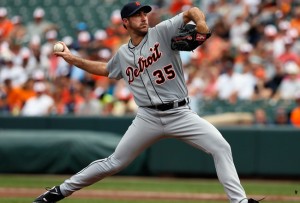Brian Schiff’s Blog
Injury Prevention, Sports Rehab & Performance Training Expert
I work with a lot of baseball players in my clinic. In many cases, I see similar issues and recurring problems in them, especially pitchers. Some of these issues include:
- Scapular dyskinesia
- Limited thoracic spine mobility (extension and/or rotation)
- Soft tissue tightness (lats, post shoulder, pec major/minor)
- Poor muscular strength/endurance in the rotator cuff and scapular stabilizers
- Glenohumeral internal rotation deficit (GIRD)
I integrate routine mobility exercises for my throwers, as well as other overhead athletes (tennis, swimming, volleyball, etc) to better prepare them for training and their sport, as well as prevent poor mechanics and compensatory motion that may lead to aberrant stress on the rotator cuff and labrum.
The following video reveals five of my preferred exercises using a foam roller to improve thoracic spine mobility, decrease latissimus tightness, and stretch the pec major/minor while facilitating lower trapezius activation.
In order you will see:
- Lat rolling
- T-spine extension in supine
- T-spine extension coupled with lat stretch
- T-spine rotation
- Retraction and downward rotation
I advise performing 5-10 repetitions of each prior to training and sport. These will help improve performance, optimize overhead mechanics and reduce injury risk associated with overhead sports.

Photo from Bleacher Report
Shoulder surgery is a big concern for any professional pitcher. I am currently rehabbing two MLB pitchers (one from a labral repair and the other from a Tommy John procedure and obviously not JV pictured above). They are doing great so far in their early rehab, but time will tell if they make it back to their pre-injury pitching levels.
Overuse injuries in youth baseball players is always a huge concern I have. In fact, I speculate that early wear and tear may contribute to injuries seen down the road in HS, college or the pro ranks. I know from coaching and observing that more youth coaches need to familiarize themselves with pitch count guidelines and rest/recovery recommendations that Little League baseball now endorses.
As a sports physical therapist who sees 12 year-olds with RC problems and torn UCLs and as a father/coach of a 10 y/o left-handed pitcher, I have a strong passion and vested interest in the welfare of baseball pitchers. While research does not equate increased injury risk with throwing curveballs and sliders to date per se, both of my MLB clients advise against it until athletes turn 14 or 15.
For information on injury prevention and pitching guidelines for youth, check out this website:
http://www.asmi.org/research.php?page=research§ion=positionStatement
Today’s blog post focuses on outcomes following surgery for elite pitchers. The following information was just published in the Jul/Aug 2013 edition of Sports Health by Harris et al. based on literature review based on these outcome measures:
Primary = pitcher’s rate of return to sport (RTS) at the same level prior to injury
Secondary = rates of RTS regardless of level, performance upon RTS and clinical outcome scores
“Elite” was defined as throwing in at least one game in MLB, minor league (A, AA, or AAA) or all collegiate divisions. Six level I-IV studies were included with enrollment from 1976 – 2007, and there were 287 elite male pitchers who underwent shoulder surgery with 99% on the dominant throwing shoulder. Most pitchers (276) were professional with a mean career length of 6.58 years. Post-operative clinical follow-up within these studies was 3.62 years.
Primary diagnoses treated:
- RC tear = 120 (43%)
- Internal impingement = 82 (30%)
- Labral tear = 74 (27%)
Surgical procedures performed:
- Labral repair (157) or labral debridement (99)
- RC repair (29) or debridement (162)
- Thermal capsulorrhaphy (63)
- Subacromial decompression (42)
The statistics reveal more debridement of the labrum (61%) and rotator cuff (85%) versus repair. This is not necessarily surprising given the desire to minimize surgical intervention and loss of motion.
Return to Sport Data
- The overall rate of return to sport was low at 68%.
- Mean time to return to competitive pitching in a game situation was 12 months (range = 9 -17)
- 22% of MLB pitchers never pitched again in MLB
- Only 14% returned to competitive pitching in the same season as labral surgery
- No one returned to competitive pitching in the same season after rotator cuff surgery
- Reynolds et al reported a median of 2 seasons of pitching after debridement of partial thickness cuff tears
- Mazoue and Andrews reported a mean of 0.7 seasons pitching (range 3 innings to 3 seasons) after mini-open RC repair
Performance declined for the 3 seasons prior to surgery and then gradually increased for 3 seasons afterward, but generally did not reach pre-injury levels.



